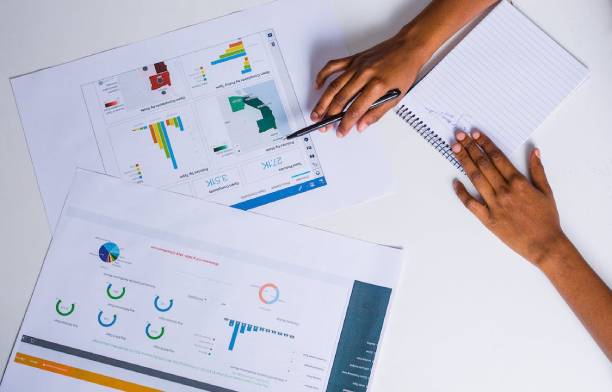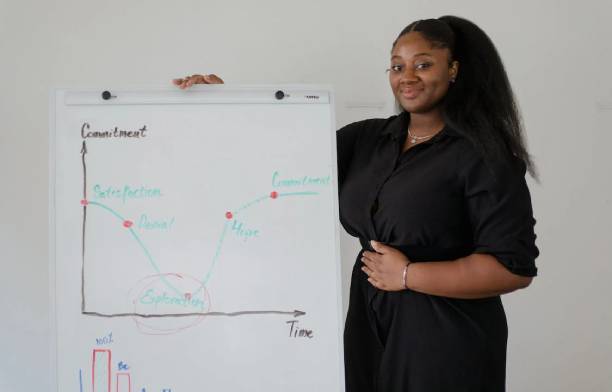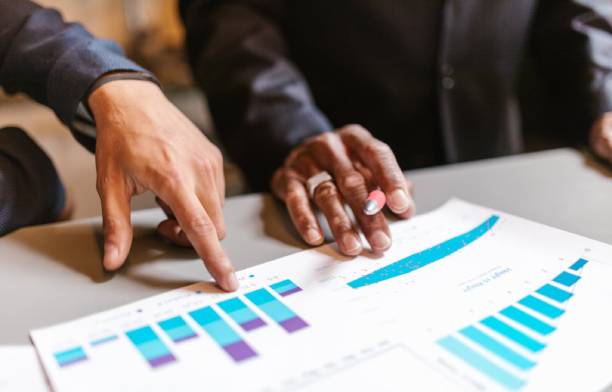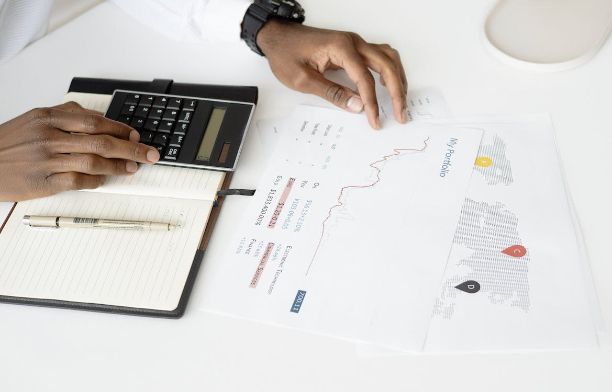What is a Balanced Portfolio?

A balanced portfolio is a crucial element for any investor looking to build a long-term investment strategy. In essence, it refers to a diversified portfolio that includes a mix of different asset classes, such as stocks, bonds, and cash, with the aim of reducing risk and maximizing returns.
While many investors may focus solely on stocks, a truly balanced portfolio will also include bond investments, which can provide a stable source of income and act as a hedge against market volatility.
This blog post explores what a balanced portfolio is, why it's important, and how to create one that's tailored to your investment goals and risk tolerance. Our trusted financial advisor can also provide you with customized guidance.
Key Takeaways
- A balanced portfolio is a diversified investment strategy that includes a mix of different asset classes to reduce risk and maximize returns.
- An ideal balanced portfolio can be structured as a combination of various assets such as dividend-paying blue-chip stocks, small-cap stocks, government bonds, and corporate bonds.
- To create a balanced portfolio, consider factors such as objectives, time horizon, and risk tolerance. It is recommended to hire a financial advisor to help pick the best investments for the portfolio.
Disclaimer
The contents of this article are for educational purposes only. They are not intended to be a source of professional financial advice. You will find experts on financial planning, financial management, and real estate here. More on disclaimers here.
Balanced Portfolio

A “balanced portfolio” is a strategy used by most investors. As the term implies, investors seek to balance their investment earnings against the risk of losing money when the markets become neurotic and start mimicking a rollercoaster (i.e. market volatility).
They do this by investing in a mix of stocks and bonds.
Why is a balanced portfolio important?
The core premise underpinning this investment strategy is simple to understand: stocks and bonds usually move in opposite directions.
Stocks are the rocket fuel that can earn investors hefty returns and turn schmucks into millionaires. Bonds are the boring steady Eddies that don’t make as much as stocks, but that keep their cool when markets become volatile.
Is a balanced portfolio a good investment?
Building a balanced portfolio doesn’t always mean bonds will rise in value when stocks fall. It’s just that bonds normally won’t decline when stock values retreat. Investors have employed this strategy for decades because it works.
What is the average return on a balanced portfolio?
For investors who seek moderate returns and are comfortable with taking on some investment risk, a balanced portfolio with a target asset allocation of 45% in defensive assets and 55% in growth assets can be a suitable option.
This allocation is designed to strike a balance between generating returns and minimizing risk. Typically, a good average annual rate of return for long-term investments in the stock market is considered to be 10% or higher, which can help investors achieve their financial objectives over time.
What is an example of a balanced portfolio?
An ideal balanced portfolio could be structured as a combination of various assets, such as a quarter of dividend-paying blue-chip stocks, the next quarter of small-capitalization stocks, another quarter of AAA-rated government bonds, and the last quarter of investment-grade corporate bonds.
This diversified approach enables investors to spread their investments across multiple asset classes, thereby reducing overall portfolio risk while potentially increasing returns.
How to Create a Balanced Portfolio: First Steps

In order to create a balanced portfolio, you need to consider a few factors, such as your objectives (are you investing to get rich or to make enough money to pay for your kid’s college tuition?); time horizon (are you young or retiring soon?); and risk tolerance (can you stomach the market’s violent ups and downs?).
That said, at this point I would recommend that you seriously consider hiring a financial advisor to help you properly weigh and understand those factors I just mentioned. Think of this person as a coach. You’ll also need an adviser to help pick the best investments for your portfolio.
Financial advisors come in two forms: human beings and robots. If you want the benefits of both, some companies, such as Personal Capital, will combine the two.
That said, there are unfortunately plenty of sharks out there who call themselves “financial advisers,” but who will rip you off in a heartbeat if you’re too trusting or if you don’t pay attention.
If an adviser doesn’t have the hard-earned CFP designation, avoid him or her like the plague. But we trust our certified financial planner (CFP) at Bay Street, Ekenna Anya-Gafu.
How to Create a Balanced Portfolio: Next Steps

Fine! You figured out your objectives, time investment horizon, and risk tolerance. Maybe you hired a financial advisor. Now comes the fun part: deciding on what stocks and bonds to buy for your investment portfolio.
First, especially for young investors new to the world of investing, don’t buy individual stocks unless you really know what you’re doing. It’s easy to get burned. Same for bonds, though their burn factor is less severe.
This is why I advocate buying exchange-traded funds, or ETFs. They offer the cheapest and simplest way to get into the stock and bond markets. And what’s cool is that ETFs trade like stocks — you can buy and sell them whenever the markets are open.
ETFs also offer investors diversification because a single ETF may hold stocks or bonds for hundreds of U.S. or foreign companies. Winners compensate for the losers. ETFs are so varied that they give investors thousands of ways to bet on countries (such as China), industries (pot, for example), or products (like video games).
What is a Balanced Portfolio Asset Allocation?

The traditional balanced portfolio consists of 60 percent stocks and 40 percent bonds. However, your asset allocation should be based on your age.
Younger investors are in a better position to take on more risk than older investors are. Younger folks have a lot more time to recover if they lose money. That’s why I believe that they should be aggressive with stock investments and become less aggressive over time, as they approach retirement age.
For example, let’s say that you’re in your 30s. You should have a portfolio that’s 80 percent stocks and 20 percent bonds. By the time you reach your late 50s and beyond, your portfolio should be a conservative 50-50 mix.
Working with a balanced fund can be beneficial. Balanced funds (aka asset allocation funds) are a type of investment fund that spreads its holdings across multiple asset classes. To maintain diversification, these funds usually have minimum and maximum allocations for each asset class they invest in.
The importance of asset allocation in balanced portfolios

Most retirement investment plans that are offered through employers — such as 401(k)s — offer what are called target-date funds. These are catchall mutual funds based on your planned retirement date. They offer diverse exposure to stocks and bonds.
As you age, target-date funds invest less in risky stocks and more in stable bonds. In fact, with a target-date fund, you don’t need to invest in any other mutual fund.
But I don’t like them. They’re too expensive compared to ETFs and index funds (which are mutual funds structured like ETFs).
All ETFs, index funds, and mutual funds charge you a fee called an expense ratio. In my individual retirement account, or IRA, I own several ETFs — four that invest in U.S. and foreign stocks, and one that invests in bonds.
I average a super low expense ratio of 0.05 percent (that’s 50 cents a year on $1,000 invested). In contrast, the average target-date fund charges an expense ratio of 0.51 (or $5.10 a year on $1,000). Big difference.
Why is it important to rebalance portfolios?
Aside from expense ratios, it’s also important to rebalance your portfolio if your have grown significantly and, as a result, deviate from your investment objectives. Rebalancing forces you to sell your overperforming stocks, ETFs, or mutual funds to buy underperforming ones.
Final Thoughts on Creating a Balanced Portfolio
I don’t see the concept of balanced portfolios changing anytime soon. Having an all-stock portfolio is both dumb and dangerous. And keep in mind that bonds come in a variety of flavors, and some are more sensitive to higher interest rates than others.
Shop around. Do your homework. Talk to your financial advisor. That said, it really comes down to diversification: You want to spread the risk around to as many investment products as possible.
Bay Street Capital Holdings

Bay Street Capital Holdings is a financial company that provides independent investment advisory, wealth management, and financial planning services to enhance total assets and income while efficiently managing overall risk and volatility.
The company's founder, William Huston, has been recognized as one of Investopedia's Top 100 Financial Advisors for 2022. Bay Street Capital Holdings was established to foster diversity and aid emerging fund managers and entrepreneurs.
Additionally, the firm was a finalist in the Asset Manager for Corporate Social Responsibility (CSR) category, out of more than 900 firms in the US.





















